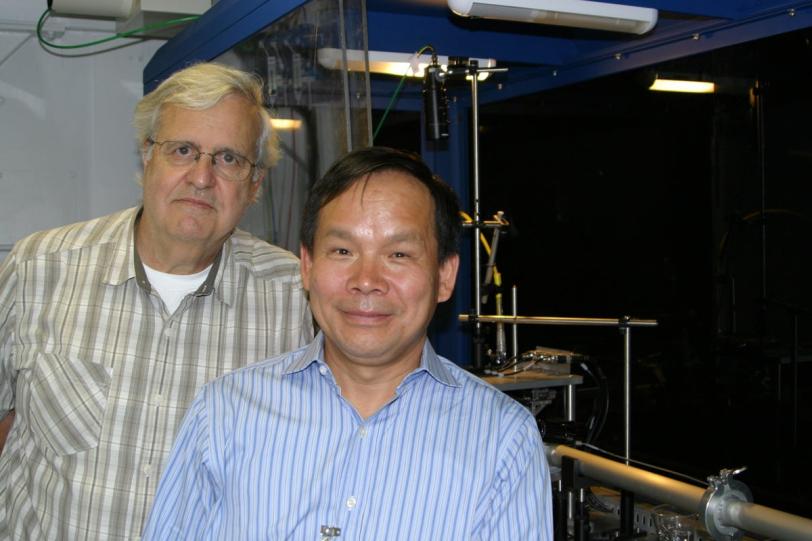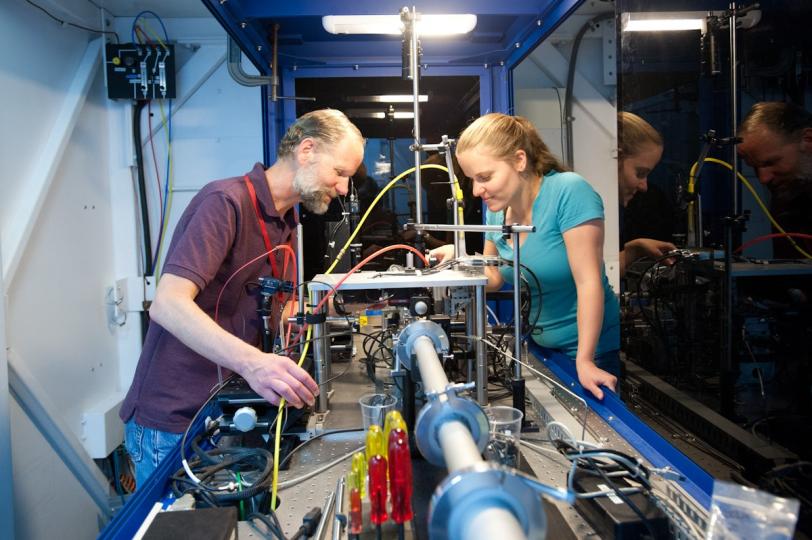Xradia: A Pioneering Provider of Innovative X-Ray Microscopes
In the first of an occasional series of articles profiling companies that supply or use SLAC facilities, we look at Pleasanton-based Xradia, Inc., which designs and makes innovative X-ray microscopes.
By Mike Ross
In the first of an occasional series of articles profiling companies that supply or use SLAC facilities, we look at Pleasanton-based Xradia, Inc., which designs and makes innovative X-ray microscopes.
A former Department of Energy scientist who invented a better way to make X-ray microscopes for high-resolution 3-D imaging has turned that idea into a thriving company that now makes equipment for SLAC’s Stanford Synchrotron Radiation Lightsource (SSRL) and many other synchrotrons worldwide.
Twelve years ago, Wenbing Yun left his job as a beamline scientist at Lawrence Berkeley National Laboratory’s Advanced Light Source to commercialize a device he invented to efficiently focus X-rays with a tapered hollow glass tube. Now his company, Xradia, Inc., has more than 100 employees producing X-ray microscopes and optics for scientists worldwide working in areas as diverse as life sciences, materials science, rock physics modeling for assessing oil and gas drilling feasibility and semiconductor package development and failure analysis.
Still privately held, with funding from Intel Capital and other investors, Xradia just over a year ago brought its Bay Area employees together in a new, 37,000-square-foot global headquarters in Pleasanton, Calif.
SLAC, which has several joint research projects with Xradia, is home to the third microscope the company ever made. It is installed at SSRL’s Beam Line 6.2c, where it has enabled researchers to get nanoscale images of biological molecules, lithium-ion battery components in operation and catalytic reactions occurring at 500 degrees Celsius.
Piero Pianetta, SSRL deputy director, vividly remembers his decision to buy the microscope from the then-new company during the most-recent upgrade of the Stanford Positron Electron Accelerating Ring (SPEAR3), which stores the high-energy electrons that produce SSRL’s X-rays.
“I believed we could do a lot of things with one of their microscopes,” he said. At the time, Pianetta recalled thinking having the microscope built internally – but also, that it would probably take five years, half a dozen people and end up being almost as good and costing more. He concluded, "From Xradia, however, I’d get a guaranteed product in nine months!”
Impressed by the microscope’s potential for imaging biological structures, the National Institutes of Health funded SLAC’s purchase.
“Since getting that first microscope, we’ve made a point of doing joint projects with Xradia,” Pianetta said. “They need to test and tweak their optics, and we get early access to next-generation components.”
Most recently, SLAC and Xradia were awarded a DOE Small Business Technology Transfer grant to adapt SLAC’s advanced data acquisition and analysis software suite to enhance the performance and improve the user experience of Xradia microscopes. Xradia currently has the world’s largest installed base of commercial X-ray microscopes at synchrotron sites – with units in China, Australia, Spain, France, Germany, Taiwan, the United Kingdom and United States.
“Our company has benefited substantially from working at synchrotron facilities and national laboratories,” Yun said. “The high concentration of experts and diverse research fields provide an environment for learning and creating new ideas.”
After being educated in China, Yun became seriously interested in X-ray microscopy while doing graduate work at Stony Brook University in New York and worked at three DOE national lab synchrotrons before he created Xradia. His Ph.D. work at Brookhaven’s National Synchrotron Light Source helped set the foundation for coherent diffraction imaging, one of the most important X-ray techniques for determining 3-D structures of biological molecules.
After his 1987 graduation, Yun became a beamline scientist at Argonne’s Advanced Photon Source, and then at Berkeley Lab’s Advanced Light Source.
“When I moved to Berkeley Lab in the summer of 1998, the environment for high-tech startups in the San Francisco Bay Area was very good,” Yun said. “The lab organized seminars at which venture capitalists encouraged us to develop our ideas into commercial products. That got me to think about the possibility of starting a company.”
Knowing that X-ray microscopy had unique advantages for nondestructive, high-resolution imaging and that light and electron microscopes were already billion-dollar commercial markets, Yun thought the time was right for a company to provide X-ray microscopes to semiconductor manufacturers, who need to inspect the inner details of their products without first cutting them into pieces.
“One problem was that I had no idea how to get a company started,” Yun said. “Fortunately, I was introduced to a serial high-tech entrepreneur, Ken Nill, who believed in my story and agreed to provide seed funding and guidance.” In 2000, Yun, Nill and another colleague created Xradia, which is one of more than 30 startups assisted by Berkeley Lab’s tech transfer program over the past two decades.
Within two and half years, Xradia’s initial 10 employees had created an R&D and manufacturing facility for making the highest performance hard X-ray optics and built the world’s most advanced X-ray microscope. A downturn in the chip industry, however, meant that Yun’s intended customers were not willing to invest in new equipment.
So he turned to familiar ground – synchrotrons – and his business blossomed.
In addition to X-ray microscopes, Xradia also develops and sells advanced optical components for X-ray imaging. Yun himself has filed more than 38 patent applications and co-authored more than 100 technical publications. Xradia products have won three "R&D 100" awards.
Recently, Xradia developed a less-expensive, lower-resolution X-ray microscope system small enough to be used in university and commercial labs. The new equipment makes X-ray microscopy available to many more users.
“Wenbing and his team always have their eyes open, looking for new opportunities,” Pianetta said. “Xradia is a real success story.”

(Photo by Andrew Cyphers)

(Photo by Matt Beardsley)